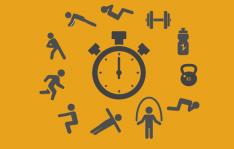When I looked on the publication site PubMed, I found only one study on weight training and swimmers. This particular study, done by the Human Performance Laboratory at Ball State University, did not find a transfer from dry land to water performance. The study concluded that it was perhaps due to the lack of specificity of the dry-land training.
I Hate the Gym
Is it possible to make performance gains without a strength-training program?
Yes, for some athletes.
A number of triathletes make performance gains using paddles in the pool and utilize hills for strength improvements in cycling and running.
More: 11 Exercises to Boost Hip Strength
How important weight training may be to endurance athletes is not quantitatively known at this time. In my coaching experience, the athletes I have seen benefit the most from a strength-training program include:
- Athletes who are very thin and not naturally muscular
- Those who are weak in the upper body
- Those who are weak cyclists
- Those with muscular imbalances
Tips for Starting a Strength Training Program
- Begin with light weights to allow your body to learn the correct movements and minimize the risk of injury.
- Make multi-joint exercises the priority, and do single-joint exercises as time allows. For example, squats use three joints: the hip, knee, and ankle. Knee extensions use only the knee joint.
- Mimic positions and movements of swimming, cycling and running as close as possible.
- Include abdominal and lower-back exercises to strengthen your torso.
- Separate strength training sessions by at least 48 hours.
- Maintain good postural alignment. This means standing in a normal, relaxed, neutral position with your head supported by your neck, which has a normal curvature. For example, when doing squats, your head and neck should be in a position that allows the curvature of your neck to be in a normal position--head not craned toward the ceiling or chin at the chest.
- Always maintain control of the weight on the concentric and the eccentric actions. This means using muscles, not momentum, to lift the weight. It also means lowering the weight while using muscles to control the speed, not allowing gravity to do all the work, and only using your muscles to stop the weight at the end of the motion.
- A strength training program for triathletes can be found in this free download section.
More: The Role of Strength Training in Triathlon
 Ready to ride? Search for a cycling event
Ready to ride? Search for a cycling event
- 2
- of
- 2









Discuss This Article